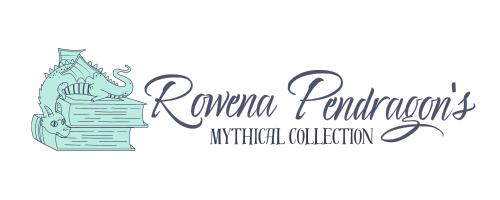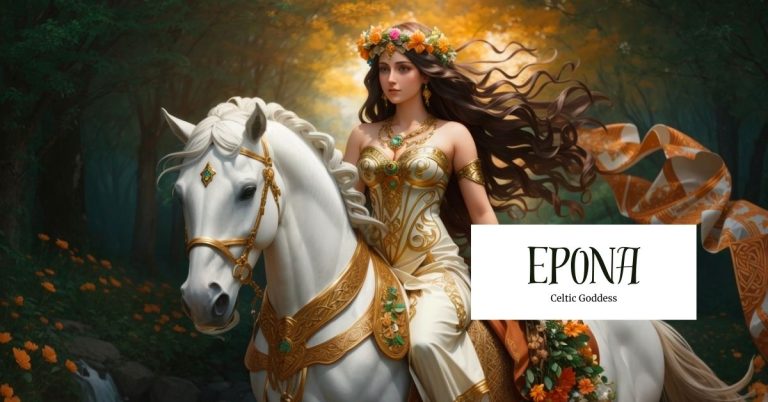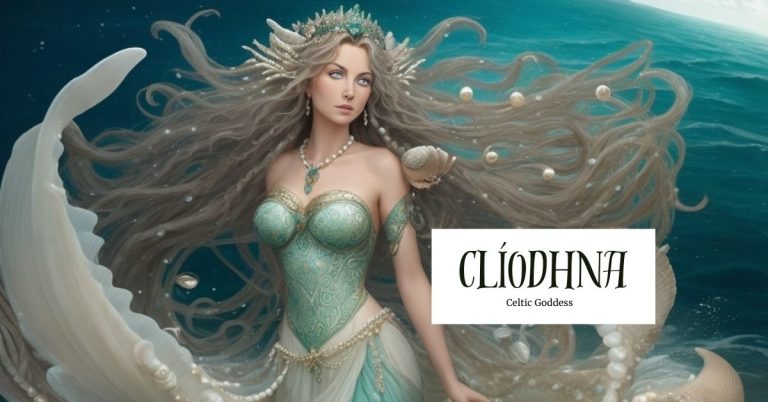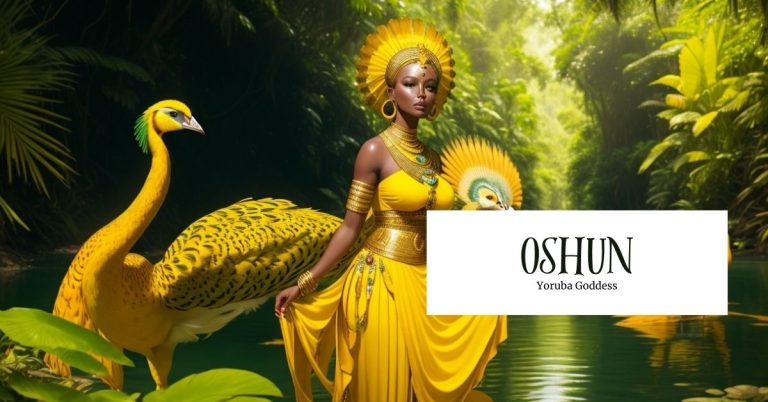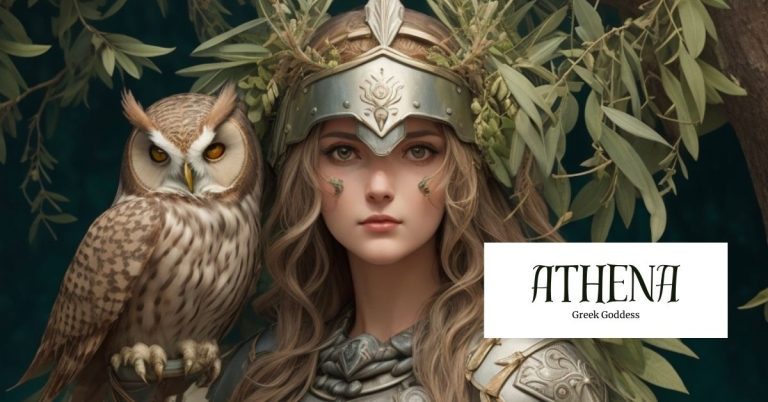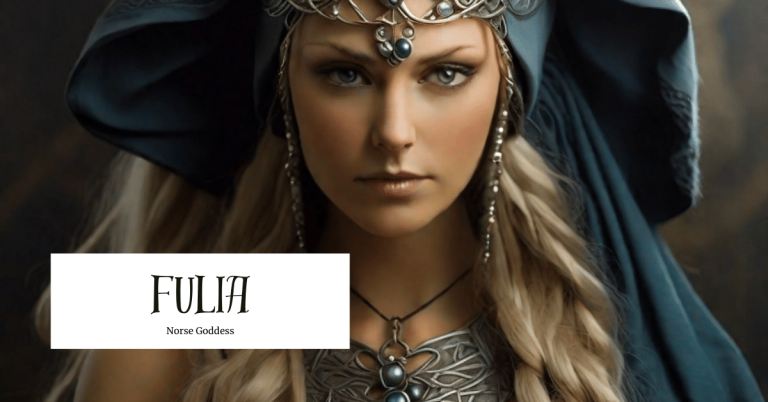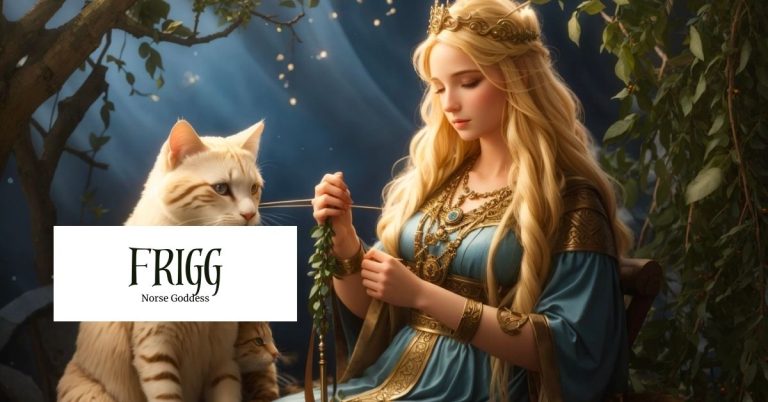Áine: Goddess of the Sun, Moon, and Love
Áine, the Goddess of the Sun, the Moon, and Love. She is the radiant embodiment of the sun’s warmth and the moon’s gentle embrace, a guardian of love’s transformative power, and a symbol of the deep connection between humanity and the natural world. Her name resonates through the ages, and her stories continue to enthrall those who seek to understand her essence.
Áine, pronounced “aw-nyuh,” is a prominent figure in Irish mythology and folklore, often referred to as a goddess or fairy queen. From her roles in love and fertility to her significance in the changing seasons, Áine’s influence is palpable, reminding us of the profound interplay between humanity and the celestial forces that shape our world.
Overview
Source: Let’s Go Ireland
The name Áine is believed to be derived from the Irish Gaelic word “aon,” which means “one” or “unity.” This connection to unity and oneness underscores her role as a goddess of interconnectedness in nature. During the summer solstice, known as “Lá Fhéile Eoin” or “Aine’s Day,” bonfires are traditionally lit in her honor on this day, representing the sun’s energy and the height of the summer season.
Áine’s stories are deeply ingrained in Irish folklore, with numerous local legends and tales recounting her interactions with humans, often involving love, protection, and guidance. In these stories, she can be both benevolent and capricious, reflecting the unpredictable nature of the fairy folk. Despite the Christianization of Ireland, Áine’s influence persisted in Irish culture. Many places, such as hills, rivers, and landmarks, are named after her, emphasizing her enduring presence in the Irish landscape.
Áine’s connection to both the sun and the moon illustrates her dual nature. As the goddess of the sun, she represents warmth, light, and the vitality of the day. Conversely, her role as a lunar deity signifies the mystical, reflective, and transformative qualities associated with the moon. Áine is also revered as a goddess of love and passion. Her story often intertwines with tales of romantic entanglements, emphasizing the emotional and amorous aspects of her character.
Titles
- Faery Queen
- Love Goddess
- Lady of the Lake
- The Goddess of the Earth and Nature
- The Goddess of Luck and Magick
- Leanan Sidhe (“Sweetheart of the Sidhe”)
Abilities
Goddess Aine’s powers were intimately tied to her dual aspects as both a Moon Goddess and a Sun Goddess. As a goddess of love, Áine held sway over matters of the heart. She could inspire love and passion among mortals, guiding them in matters of romance and affection. Her association with wealth made her a powerful guardian of prosperity and abundance.
Áine’s connection to the summer season was marked by her role as a goddess of the sun. She presided over the summer solstice, when her powers were at their peak, bringing light, warmth, and vitality to the world. This seasonal transition marked a time of growth and abundance. Áine’s association with wealth made her a powerful guardian of prosperity and abundance.
In her Sun Goddess aspect, Áine possessed the remarkable ability to transform into “Lair Derg,” a red mare. This form was said to be so swift that no one could outrun her. This shapeshifting allowed her to walk among her people unnoticed, observing their lives and offering her blessings.
Characteristics
Áine is typically described as exceptionally beautiful, with an otherworldly allure that mesmerizes those who gaze upon her. Many representations of Áine depict her with long, flowing golden hair that shimmers like sunlight. Her eyes are often described as bright and luminous, reflecting the light of the sun and the moon. This radiant gaze is thought to convey her power and presence.

Source: Culture Frontier
Áine is often portrayed wearing garments befitting a goddess, typically adorned with symbols of the sun, moon, or nature. Her clothing may reflect the colors of the natural world, such as green and gold. In some depictions, Áine is shown wearing a crown or headdress adorned with celestial symbols, further underscoring her connections to the sun and the moon.
Traits
Áine’s role as a goddess of love and passion is central to her personality. She is a passionate and alluring figure, capable of inspiring intense emotions and romantic entanglements among mortals. As a deity closely linked to the land and fertility, Áine is nurturing and protective. She ensures the well-being of crops, livestock, and the natural world.
Áine is not a passive figure in Irish mythology. She is often portrayed as independent and strong-willed, with the ability to make her own choices and assert her divine will when necessary. Áine, like many figures in Irish folklore, can be capricious and unpredictable in her dealings with mortals. She may grant favors or blessings one moment and test individuals’ resolve the next, reflecting the ever-changing nature of the natural world.
Symbols
Source: Feminism and Religion
Áine is closely associated with the summer solstice, which is celebrated as Midsummer, Litha, or the Summer Solstice in various traditions. Additionally, she has sacred days following Lughnasadh, marking the transition from summer to autumn. Áine’s dual nature as both a Sun Goddess and a Moon Goddess makes the celestial bodies important symbols representing her.
Áine is associated with the element of air, which represents communication, intellect, and the breath of life. This connection emphasizes her role as a deity who influences the natural world and human interactions. Meadowsweet, a sacred herb of Druids, is closely associated with Áine. Áine’s ability to transform into “Lair Derg,” a red mare that no one could outrun, is one of her distinctive symbols.
Áine’s association with the Irish Province of Munster, particularly County Limerick, is symbolized by the presence of the hill of Knockainy (Cnoc Áine). This hill is considered sacred and is closely linked to her worship and folklore.
Festivals and Rituals
The festivals and rituals dedicated to Goddess Áine have a rich history and are deeply intertwined with the cycles of nature. St. John’s Eve, celebrated on June 23rd, is perhaps the most renowned of all festivals dedicated to Áine. This date marks the summer solstice, a time of peak sunlight and vitality in the natural world. Fires were traditionally lit on St. John’s Eve in honor of Áine. These bonfires symbolize the sun’s power and the warmth of summer. The lighting of fires on this sacred night is a way to pay homage to Áine and seek her blessings for the season ahead.

Source: Lough Gur
Rituals and worship for Áine have long been conducted at sacred sites, with one of the most notable being the hill of Knockainy (Cnoc Áine) in County Limerick, associated with the Goddess. Pilgrims and devotees would visit these sacred locations to connect with Áine’s presence and seek her blessings, especially during the festivals associated with her. Offerings such as flowers, meadowsweet (a sacred herb associated with Áine), and other tokens of reverence would be left at these sites as gestures of devotion.
Legends and Myths
From her divine lineage to her intricate relationships with mortal lovers, Áine’s tales reveal a captivating blend of love, nature, and mysticism.
Origin story
Source: Amino
One of the prominent origin stories of Áine places her as the daughter of King Eógabail (also known as Eoghanach), who was a member of the Tuatha Dé Danann. This ancient and powerful supernatural race held a central role in Irish mythology. King Eógabail’s connection to the Tuatha Dé Danann suggests a divine lineage for Áine.
In this version of the story, Áine’s foster father is the sea god Manannan Mac Lir, a figure associated with the seas and the mysteries of the deep. This relationship with Manannan Mac Lir further underscores her divine heritage and ties to the elements of water and nature.
Another version of Áine’s origin story claims her as the daughter of the Dagda, one of the most prominent and powerful deities in Irish mythology. This lineage would make her a sister to Brigid, another revered goddess in Celtic tradition, often associated with fertility and the hearth.
The Gift of Grain
One warm and golden Lughnasadh day, as the sun kissed the earth, Áine sat in her sacred birthing chair. Lughnasadh was a time of celebration, a festival marking the beginning of the harvest season. It was a time when the people of Ireland gathered to give thanks for the abundance of the land and to honor Áine.

Source: Feminism and Religion
As Áine sat in her birthing chair, her presence radiated with a gentle yet powerful energy. Her hair shimmered like the golden wheat fields, and her eyes sparkled like the midsummer stars. She held in her hands a sheave of grain, a symbol of the harvest to come. With a loving and benevolent smile, Áine began to give birth to the sheave of grain right there in her birthing chair. The grains of wheat flowed from her hands like a gentle river.
By giving birth to the sheave of grain on this sacred day, Áine was bestowing a precious gift upon the people of Ireland—the gift of grain, the lifeblood of sustenance and prosperity. With gratitude in their hearts, the people accepted Áine’s gift. They saw in it not just food for their bodies but also a symbol of her enduring love for her land and her people. They knew that as long as they honored Áine and cared for the land, the harvests would always be bountiful, and their lives would be filled with abundance and joy.
A Mortal Love
Source: Amino
Áine, like many divine beings, had her share of mortal admirers, but one story stands out among the tales of her mortal lovers—a story of love, mischief, and a magical cloak. One fine day, as Áine bathed in the cool, crystalline waters of a serene river, her cloak, woven from moonlight and woven with the colors of twilight, lay upon the riverbank.
It was Gerald, Earl of Desmond, who chanced upon this mystical sight. Enchanted by the cloak’s beauty and driven by desire, he decided to seize the opportunity. Gerald, known for his cunning and ambition, stole the cloak and hid it away, hoping to compel Áine’s love. However, Áine was no ordinary goddess. She knew of the cloak’s theft and the Earl’s intentions. While Gerald believed himself to be clever and cunning, he underestimated Áine’s wisdom and her deep connection to the sidhe.
For days, the cloak remained hidden, and the Earl used it as leverage to try and win Áine’s affection. He would not return it to her until she agreed to marry him. He showered her with gifts, sang sweet songs of devotion, and promised her the world, but Áine’s heart was bound by deeper connections—to the land, the seasons, and the true meaning of love.Their union bore fruit, a son named Geroid Iarla, known throughout the land as The Magician. He possessed a gift that transcended the ordinary—the power to perform superhuman feats and astounding acts of magic.
Yet, one fateful day, The Magician performed a feat so astonishing, so miraculous, that the Earl could not contain his astonishment. In that moment of surprise, Áine was free to return to the sidhe, the realm of the faeries, from whence she came.
Influences on Other Cultures and Religions
Source: The Paganista
While not directly equated with Venus or Aphrodite, Áine’s attributes share some parallels with these love deities. Like Venus and Aphrodite, Áine is associated with beauty, passion, and the vitality of life. Her role as a goddess of love and fertility reflects the universal theme of love’s transformative power.
In contemporary times, some individuals and spiritual practitioners draw inspiration from Áine’s and her associations with love, nature, and fertility. While not a direct import of her worship, these interpretations demonstrate her enduring appeal and relevance.
Final Thoughts
Áine’s legends, from her gift of grain to her interactions with mortal lovers, reveal a goddess who embodies both the benevolent and capricious aspects of nature. She is a teacher of love, a guardian of the land, and a symbol of the enduring bond between humanity and the cycles of the seasons.
While her direct associations with love deities like Venus or Aphrodite remain somewhat elusive, Áine’s universal themes of love, beauty, and the vitality of life resonate across cultures. Her influence may not be readily apparent in other mythological traditions, but her enduring appeal lies in her complexity, her connection to the natural world, and her role as a symbol of the enduring power of love in all its forms.
